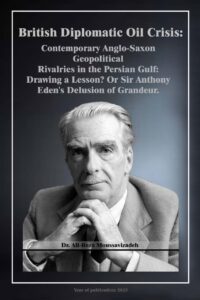The British Imperial Establishment, Post Imperial Era, and the ‘Churchillian’ World View, 1945-2016. (Adjustments & Challenges in Contemporary British Diplomatic Strategy)
49
the empire
share as well as in the foreign share. Although there was in most cases
a slight British recovery just after
1925, by the mid 1930s the decline set in again.
“Even in the dependent empire there was a growing swing
away from British
manufacturers: Malaya, for example, looking to foreign and empire sources,
Ceylon to
empire sources and Hong Kong to foreign sources. By contrast West
Africa still looked to
Britain.”25
It could
be said that Britain was relying more and more on empire outlets,
whereas the Empire on the other hand was
reducing its dependence upon British
manufactures. For example, among exports of small value such as beer,
soap,
books, luxury foods, Britain continued to find empire countries the major buyers,
“Australian
women loved to parade in hats from London while eating English
chocolates and sipping English tea. Among
exports of high value the empire was
becoming an essential outlet. Whereas one century previously textiles
went out
three pieces to foreign countries and one to the empire, in 1930 the destinations
were pegged
almost evenly.”26 There was a growing sense of
economic
independence, plans for industrialisation and search for diversified trade among
the more
developed economies (of the dominions). British manufacturers had
little reason to have long-term faith in
those empire outlets. Britain could not
expect to maintain her share in those countries.
However,
Britain was still able to wield authority as a financial centre of
the world in comparison with its decline
as a trading power. Invisible earnings
had always kept British accounts balanced. Those earnings were
achieved
through being a world banker, shipper and insurer, and particularly through
dividends from
overseas investments. The significance of the income from
overseas investment is shown by its increase as a
part of the national income,
from 4% in 1880 to 10% by 1914. The yearly income from these
investments
between 1870 and 1914 averaged out at £110 million; obviously it was higher at
the later
date (1913, £210 million on a total investment of over £3,700 million).
Pages: 1 2 3 4 5 6 7 8 9 10 11 12 13 14 15 16 17 18 19 20 21 22 23 24 25 26 27 28 29 30 31 32 33 34 35 36 37 38 39 40 41 42 43 44 45 46 47 48 49 50 51 52 53 54 55 56 57 58 59 60 61 62 63 64 65 66 67 68 69 70 71 72 73 74 75 76 77 78 79 80 81 82 83 84 85 86 87 88 89 90 91 92 93 94 95 96 97 98 99 100 101 102 103 104 105 106 107 108 109 110 111 112 113 114 115 116 117 118 119 120 121 122 123 124 125 126 127 128 129 130 131 132 133 134 135 136 137 138 139 140 141 142 143 144 145 146 147 148 149 150 151 152 153 154 155 156 157 158 159 160 161 162 163 164 165 166 167 168 169 170 171 172 173 174 175 176 177 178 179 180 181 182 183 184 185 186 187 188 189 190 191 192 193 194 195 196 197 198 199 200 201 202 203 204 205 206 207 208 209 210 211 212 213

